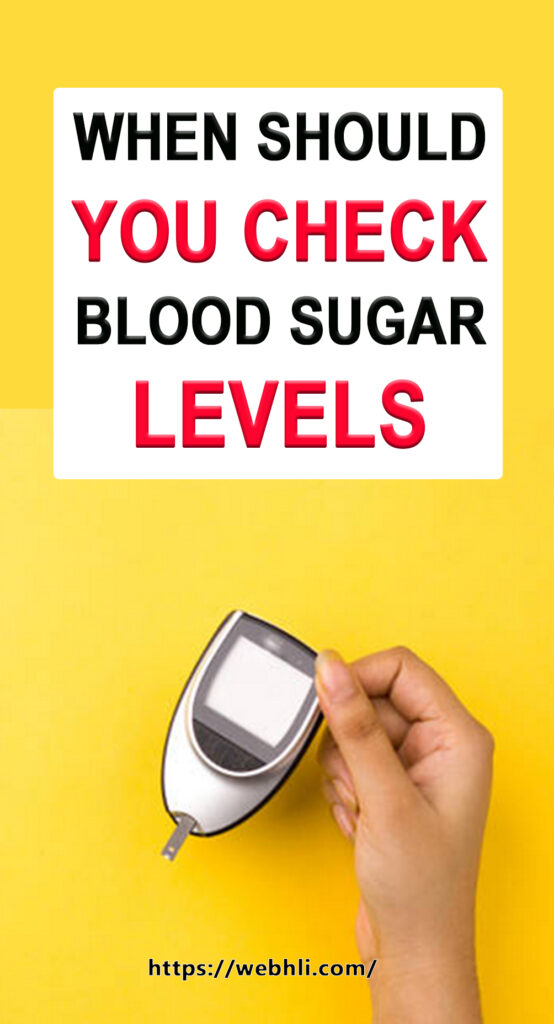
When Should You Check Blood Sugar Levels and How Does it Help Your Type 2 Diabetes?
If you have already developed the habit of self-monitoring your blood sugar levels several times a day, this is something to celebrate. Checking your blood sugars regularly is imperative for everyone diagnosed with type 1 diabetes. Those with type 2 diabetes who self-monitor their blood sugars are way ahead of the game compared to those who do not. When you know what your sugar level is, it's possible to make changes and adjustments in what you are doing for the rest of the day.
Maintaining tight control of your sugar levels... that is keeping them as near as possible to normal... significantly reduces your risk of complications.
Check out these related articles, too:
Lower Blood Sugar Levels Right With 5 Food Choices!
Is It Safe For Diabetics to Eat Cranberries?
Choosing a Diabetic Meal Plan to Stop Diabetes Symptoms
High And Low Blood Sugar Levels Chart Provides You With a Clear Idea
Diabetes Can Cause Damage to Your Eyes
10 Tips On How To Reverse Diabetes Naturally
The question is when should blood sugar levels be checked?
- these levels should be checked on fasting
- knowing this level gives you an indication of how your day is going to be
- when your fasting level is high... you may be eating less and/or exercising more
Many diabetics want to know when specifically they should take the fasting blood sugar level:
The best time is before your activities of the day get started. This includes before:
- shaving
- cleaning
- showering
The next time of the day to take a glucometer reading is:
- one to two hours after you eat a meal
If you take the reading one hour after you eat:
- this will provide you with valuable information about how well your meal was constructed.
How high did your blood sugar go? Is it normally 150 mg/dL (8.3 mg/dL) and after a pasta meal, your blood sugar shot up to 175 mg/dL (9.72 mmol/L)? If so, it would be wise to analyze the meal and see what nutrients were off kilter... what caused this issue? The protein, fat or carbohydrates?
Usually in a pasta meal, there is not enough protein. People often think that eating pasta noodles with tomato sauce, bread and butter and maybe a small glass of wine is a great meal. However, this type of meal doesn't have enough protein in it! There may be about 4 or 5 grams but what you need is at least 25 grams. That's a deficit of about 21 grams. The meal is predominantly carbohydrate, in other words it's carbohydrate rich and those carbohydrates will, of course, cause a blood sugar spike. This will then create a burst of insulin so that this spike can be lowered. You are then left with a blood sugar level that will go up and down, up and down for the rest of the day.
As well, if you have more glucose in your body than your cells need, insulin takes the extra blood glucose and transports it into fat storage. This step is important because having abnormally high blood sugar levels is called type 2 diabetes and is very damaging to your body. Self-monitoring is one of the best ways to help you overcome your type 2 diabetes.
Diabetes Foods to Eat – You Have a Lot to Eat Without Fear
Amazing Diabetics Breakfast Ideas
10 Diabetic Foods to Avoid for Blood Sugar Control
Would you like more information about alternative ways to handle your type 2 diabetes?
To download your free copy of my E-Book, click here now: Answers to Your Questions... its based on questions many diabetics have asked me over recent months.
Beverleigh Piepers is a registered nurse who would like to help you understand how to live easily and happily with your type 2 diabetes. http://drugfreetype2diabetes.com/blog
Article Source: http://EzineArticles.com/3928744

 Protected by Patchstack
Protected by Patchstack